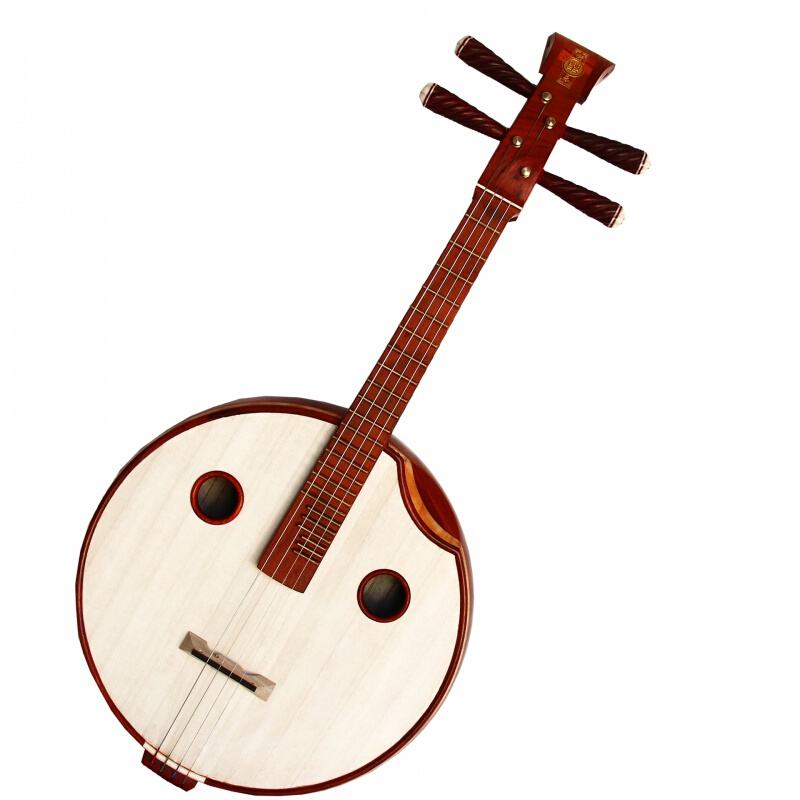Zhongruan overview
 Zhongruan (pinyin: zhōng ruǎn) is a national plucked musical instrument with a long history in China. It is a traditional plucked musical instrument of the Chinese nation.
Zhongruan (pinyin: zhōng ruǎn) is a national plucked musical instrument with a long history in China. It is a traditional plucked musical instrument of the Chinese nation.Because of the mellow tone, richness and wide range of sound, Ruan has become the main instrument in solo, ensemble, and ensemble in ancient times; in modern times, Ruan can play a powerful role in the orchestra, and Da Ruan and Zhong Ruan are mainly used in national orchestras.
Zhongruan, short for tenor Ruan, a Chinese stringed instrument, is a tenor in the Ruan nationality musical instrument. It is composed of headstock, piano rod, round resonance box, bridge and sound window, etc. It has four strings and twenty-four frets.
The materials used to make Ruan are roughly the same as those used for pipa. Neck and body frame, also available in basswood or poplar. The front and back panels are made of paulownia wood. The fretboard is mahogany. The pegs can be made of mahogany, boxwood or rosewood. The roundness of the body should be accurate, the front and back should be flat and smooth, the neck and body should be on the same plane, all parts should be glued tightly and firmly, the fret spacing should be accurate, the surface painting should be uniform, and the wood grain should be clear.
Zhongruan is a Chinese musical instrument with a quiet, soft and poetic timbre, similar to Qin Qin. It is often used to play melody or descriptive sentences in ensembles, with moving effects; Using more than two Zhongruan divisions to play the harmony will make the midrange part of the plucked instrument group fuller.
- Chinese name:Zhongruan
- type:plucked instruments
- country of origin:China
- nickname:Ruan Xian Pipa
- own instrument:ancient pipa
- tuning:Gdgd
overview of other similar instruments
- sanyanxiao overview
- Daguangxian overview
- Leiqin overview
- hahao overview
- yandundagu overview
- Han Xiaozheng overview
- Fang Xiang overview
- guanzi overview
- zhuqin (Dao Qin) overview
- zhuiqin overview
- bangzi overview
- three-stringed piano overview
- Gehu overview
- xiao overview
- xiaokonghou overview
- Konghou overview
- Sheng overview
- suona overview
- hulusi overview
- gushao overview
 渝公网安备 50010702504639号
渝公网安备 50010702504639号